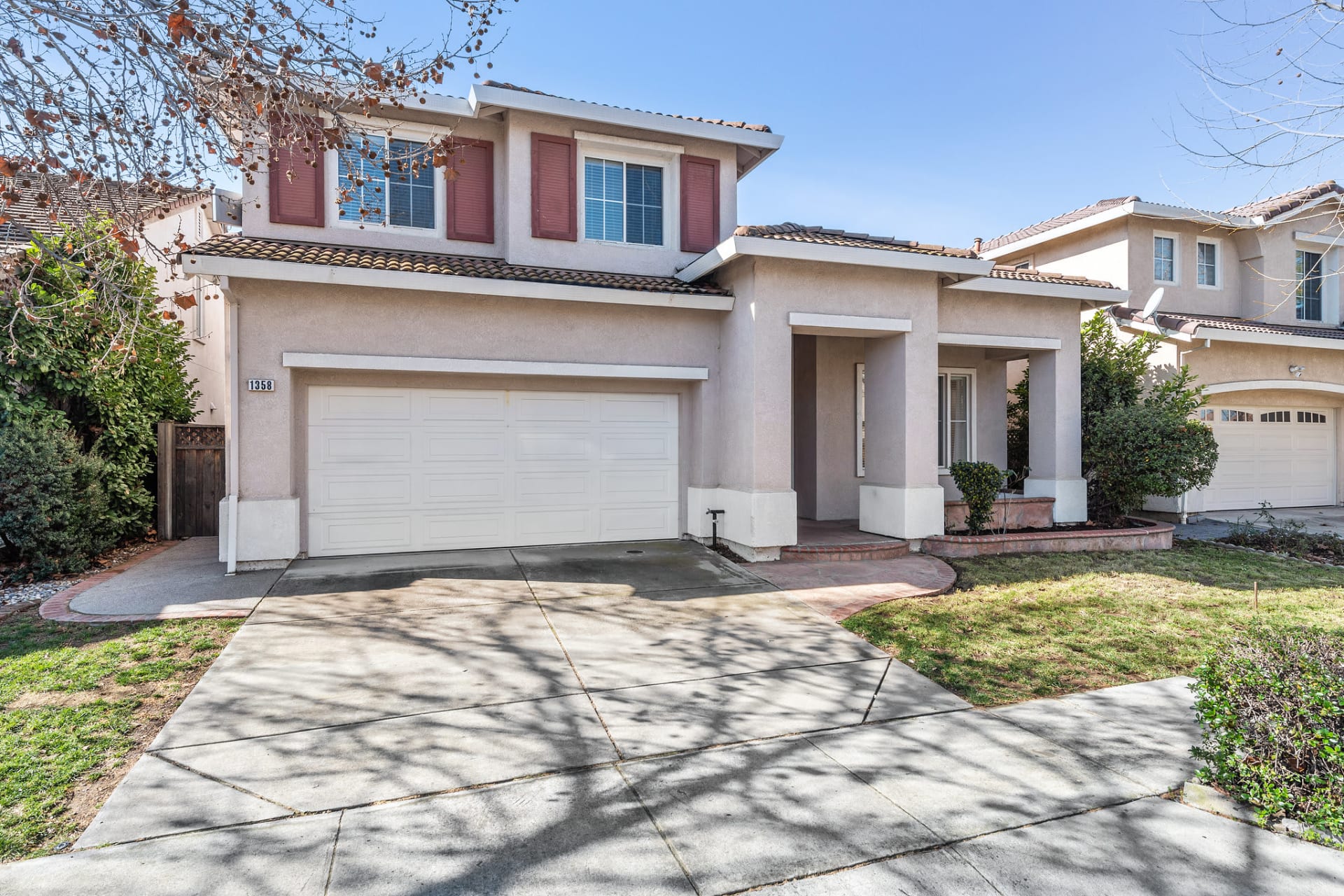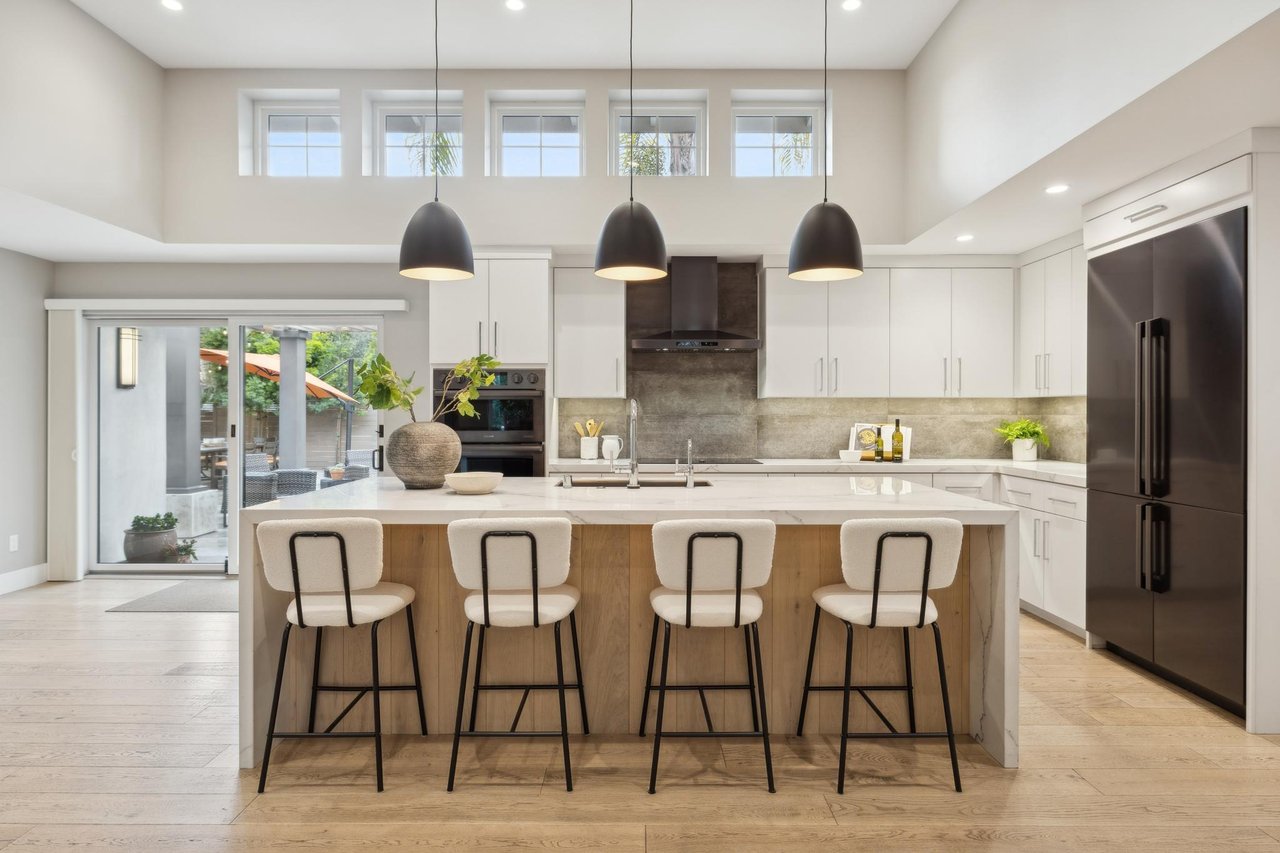When my husband inherited the home that he grew up in, we were very excited to have the opportunity to move into a bigger home in a wonderful neighborhood with a pool. However, the homeless and homage to his mother, and being in real estate, I felt that it needed a very tasteful update. My goal was to keep all the good that was already there, while also letting the original bones of the home shine through. So a remodel was decided however, the question was how to pay for the remodel. Luckily for the good fortune of Bay Area real estate, I had equity in our current home that I was able to leverage. I got a home equity line of credit on the one home and used it to pay for the remodel of the new future home.
Now fast forward, and rates have gone up; the HELOC was an interest-only adjustable rate, and it was adjusting monthly. So the options were to keep paying monthly interest with no purposeful gain (like a credit card), pay it off, or, better yet, refinance and combine my first mortgage and my HELOC - the one we used for the remodel - into one new loan.
I spoke to my lender at guaranteed rate affinity in my office, and she came up with a great idea. even though rates are high, I could refinance and combine both of the loans into one loan while maintaining a monthly payment very close to my original loan's monthly payment before everything started adjusting. This loan she put me in was a short-term strategy that created a win in terms of cash flow for me. And now, I am looking to buy another property to continue growing our real estate investments. When you surround yourself with knowledgeable people in their field, miracles can happen. I have a remodeled home that I absolutely love. I have an income-producing property that’s been refinanced to a monthly mortgage payment covered by the rental income. Plus, I still have my cash available to go out and find another investment opportunity. Now the big question is where to buy next. If you have any ideas, I am all ears!
How to leverage a real estate investment property or second home.
There are several ways to leverage a real estate investment property, including:
- Financing: Obtaining a mortgage or loan to purchase the property, using the property as collateral. This allows you to invest in a property with a smaller amount of cash as you borrow a portion of the purchase price.
- Renting: Renting out the property to tenants generates income and can help cover the costs of the mortgage or loan.
- Refinancing: Refinancing the property to take advantage of lower interest rates or to extract equity from the property. This can be used to purchase additional properties or to invest in other ventures.
- Leveraging appreciation: Holding the property long-term and selling it at a higher price than what you paid, allowing you to earn a return on your investment.
It's important to note that real estate investment comes with risks, and it's important to do your due diligence and research before investing.
The most important items to think about when remodeling.
When remodeling a property, there are several key factors to consider:
- Budget: It's important to have a clear understanding of the costs associated with the remodel, including materials, labor, and any necessary permits or inspections. Create a detailed budget and stick to it as much as possible.
- Timeline: Remodeling projects can take longer than expected, so it's important to set realistic expectations for the project's timeline and plan accordingly.
- Functionality: Consider the intended use of the space and how the remodel will affect the property's functionality. Make sure the remodel addresses any existing issues or problems and improves the overall functionality of the space.
- Design: Think about the design and aesthetic of the space and how it will fit with the overall style of the property. Consider the potential resale value of the property and the design choices that will appeal to the most buyers.
- Contractor: It is important to choose a reputable and experienced contractor to handle the remodel, who can handle all the necessary permits, inspections, and any complications that may arise during the remodeling process.
- Permits and inspections: Be aware of the local building codes and regulations, and obtain necessary permits and inspections. Failure to do so can result in fines and legal issues.
- Insurance: Ensure your insurance covers any potential damages or accidents during the remodeling process.
What are the different loans options available right now for re-financing?
There are several types of loans available for refinancing a property. The rates for fixed and adjustable-rate mortgages (ARM) can vary depending on several factors, including the current state of the economy and the lender's policies. It is best to check with a financial advisor or mortgage professional for the most current rates on fixed and ARM loans, as they are subject to change daily.
Adjustable-rate mortgages (ARM) usually have lower interest rates than fixed-rate mortgages at the beginning of the loan. Still, the interest rate can change periodically, usually every year or every few years. It is important to know that with ARMs you are taking on more risk, as there is only speculation about future interest rates. An ARM can be a good choice when rates are high and are expected to decline in future years.
Another option is an interest-only loan. This is a type of loan in which the borrower only pays the interest on the loan for a certain period of time, typically 3-10 years. The borrower does not pay any of the loan's principal during this time. After the interest-only period, the borrower must start paying off the principal in addition to the interest.
Interest-only loans are typically used by borrowers who expect their income to increase significantly in the future and want to keep their monthly payments low in the meantime. They are also used by investors planning to "flip" a property (i.e., buy it, renovate it, and sell it for a profit) within a short period of time and want to minimize their expenses during that period.
Interest-only loans can be offered as adjustable-rate mortgages (ARMs), meaning the interest rate can change periodically, typically every year or every few years.
It's important to note that interest-only loans can be risky, as the borrower is not building equity in the property during the interest-only period, and the loan balance remains the same. Additionally, when the interest-only period ends, the borrower's payments will increase significantly, which can be a hardship if the borrower's income has not increased as expected.
It's important to weigh the pros and cons of each type of loan and to consult with a financial advisor or a mortgage professional to determine which type of loan is best for your specific situation.





